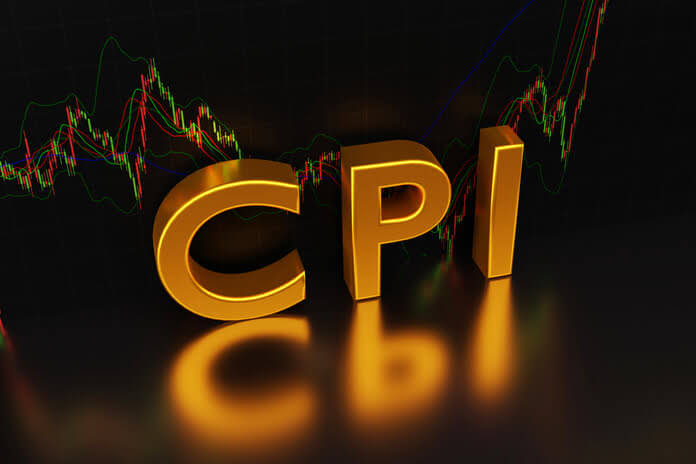Hotter-than-expected CPI data releases have prompted some of 2022’s largest one-day stock market selloffs, focusing investor attention ahead of the latest gauge of retail inflation on Thursday.
CPI Data Release Schedule and Investor Updates
According to a Dow Jones survey of economists, the September CPI data release reading from the Bureau of Labor Statistics, which tracks changes in the prices paid by consumers for goods and services, is expected to show an 8.1% increase from a year earlier, slowing from an 8.3% year-over-year rise seen in August.
According to Dow Jones Market Data, the S&P 500 SPX, is down 24.6% year to date as of Wednesday. According to Nicholas Colas, co-founder of DataTrek Research, most of the single days responsible for the fall happened on or around CPI data or Fed-related events. He pointed out that two of the S&P 500’s nine worst down days this year had occurred on days when CPI data was published.
Without those nine down days, the S&P 500 would have been up 8.6% year to date through last week, according to Colas.
For example, on CPI data release day last month, the S&P 500 fell 177.7 points, or 4.3%, the largest daily percentage drop since June 2020. The S&P 500 fell 3.9% on June 13 and concluded in a bear market when the May inflation data came in hotter than anticipated, with CPI reaching a 40-year high. Three days later, the index fell 3.3% in response to the Federal Reserve’s highest rate rise since 1994.
“Every time we have huge selloffs, it indicates that investor optimism has clashed with macro uncertainty,” Colas cautioned. “History demonstrates that when this occurs frequently, values fall.” As equities market volatility continues, keep your value expectations in check. They will bottom when macro news is met with a rally that lasts, rather than one that slips away after a few days.”
According to Bloomberg, JPMorgan economists headed by Andrew Tyler predict the stock market to fall 5% on Thursday if inflation rises over 8.3% in August. If the outcome is as expected, the S&P 500 index will decline around 2%. On the other hand, any drop in inflation below 7.9% is expected to ignite an equities rally, with the index rising at least 2%.
However, Aoifinn Devitt, chief investment officer at Moneta, believes the market will respond to the headline figure.
“I would anticipate a similar response to what we saw with Friday’s employment data, which was a strong figure that translated into a negative stock-market reaction,” Devitt told MarketWatch over the phone. “Stock prices have shifted.” Earnings have already been modified, so this type of management of expectations has already occurred (which) causes me to pick up some of this and attempt to be on the upside for some of these companies, just because so much of the negative news is already there.”
Stocks might fall ‘another easy 20%,’ and the next decline would be much more severe than the first,’ according to Jamie Dimon.
Latest on CPI Data Release Schedule
In relation to the CPI data release schedule, the headline CPI is likely to remain moderate in September, with gasoline and commodities prices falling to February levels. However, future expectations may have shifted when OPEC+ announced its commitment to decreasing output by 2 million barrels per day last week, which Devitt believes would have a “lagging impact (on inflation figures).”
Meanwhile, housing and medical care prices, which have been at the heart of inflationary pressures and are sticky, are predicted to rise by 0.7% month on month. In comparison to the previous CPI data release, the core CPI is expected to rise by 6.5% year on year, up from 6.3% in August.
“The bulls are looking for signals that inflation is about to return to the Fed’s objective – they may be misled, and although headline inflation is projected to decrease due to a drop in energy, the Fed’s attention has turned to core CPI,” said Chris Weston, Pepperstone’s head of research, in a Tuesday note.
“This is why core CPI is unlikely to roll over anytime soon,” he said, “and why the Fed has made it apparent that they will rise further and hold the fed fund rate in restrictive territory for a long period.”
The Government and PPI
According to the government, the producer-price index, which gauges the prices that companies in the United States charge for the products and services they create, gained 0.4% for the month. The 12-month PPI climbed at an annual pace of 8.5%, compared to 8.7% in August.
The Nasdaq Composite COMP, rose 0.2% on Wednesday, while the S&P 500 and Dow Jones Industrial Average DJIA, both rose 0.3%.
Featured Image- Megapixl @ Kiv722










